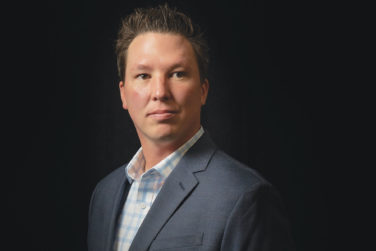Nobody likes uncertainty. Uncertainty causes markets to drop, projects to be put on hold, and approvals to be questioned. But if we allow anxiety to paralyze us, we’re trading uncertain success for certain failure. So how do we enable a risk-averse industry that hates uncertainty as much as the next person to operate effectively in an uncertain environment? The tech industry might offer some interesting answers to this question.
In Silicon Valley, businesses use “agile management” to bring products to market quickly. These products are hardly ever the end-all, be-all; they get improved over time with the release of new iterations. That’s why your operating system and other software comes with version numbers. Given it’s not really an option to produce “Drug 1.0,” and then patch the bugs and release “Drug 2.0,” how exactly are we supposed to apply such an iterative approach to biopharma?
The Minimum Viable Product
The pharmaceutical industry makes a lot more “products” than just medicines. Think of all the online content, starter kits, social platforms, live events, printed collateral, HCP detailing, advertising, advocacy relations, and the many different tactics that fly under the banner of “patient engagement.” All of this is a critical part of conducting business, and most of it can be approached from an iterative angle. Once COVID-19 hit, it had to be approached from an iterative angle.
When the environment around you has changed, when your stakeholders want to know what it means for them and how your company is responding, can you really afford to serve them content created months ago and approved yesterday? Can you afford to appear polished and glossy at the expense of filling a manifest, time-sensitive need among HCPs and patients? If you can only accept one “perfect,” flawless execution, you’ll have your COVID-19 response months after the pandemic is over.
That’s why we’ve seen several biopharma companies roll out a “minimum viable product” (MVP) as soon as possible and deliver subsequent updated versions as they gathered feedback and additional data. Think of agile methods as your company’s suspension springs: They soften the impact and shield your stakeholders against some of the external instability, keeping the center of gravity largely stable.
User-generated Content
One way to produce an MVP is to tap into user-generated content (UGC). An example: Converting planned video shoots to a remote smartphone format. The content can be the same, just at a different production value. Once in-person video shoots become viable again, a new iteration of that content can and probably should still be produced. Approvals will already be in place, and aspects that may not have entirely satisfied in the first iteration can be corrected.
Another example of timely agile responses to a crisis environment is UGC that specifically addresses questions that have become relevant overnight. We’ve seen biopharma companies produce video campaigns in which patients they engage with talk about what it means to be a patient with that condition and living through COVID-19: The increased risk from infection, the ways to stay safe and to access their prescriptions, and inspirational messages about staying the course.
Empowered Cross-functional Teams
In all of those cases, it is exceedingly important to not lose sight of the overall goal of improving over time. Agility doesn’t mean to settle for less or to compromise quality. The subsequent steps of improvement are a critical component of the concept. We don’t build cheap, disposable stuff; we make life-saving drugs. This ethos obviously needs to carry over to all arms of the business.
Another key component of agile ways of working is to break down silos and create cross-functional teams to develop solutions. The output these teams generate would consider more interdependencies from the get-go, relieving senior leadership from having to coordinate disjointed partial solutions. By empowering the teams, management can focus on the task of addressing the latest challenges.
Patients as the Guiding Post
“Move fast and break things,” can’t be pharma’s operating principle (and even tech doesn’t embrace it in all aspects of their business). But moving fast is something biopharma is becoming more comfortable with. If you go back to why your business exists—not just in terms of vision and mission, but at the core of the business model—patients are the one foundational piece. We simply wouldn’t exist as an industry without people who need medicines to get better. That’s why they are the most plausible guiding post: Will patients be better served with speed and periodic improvements or with nothing first, and everything later? The answer is not uniformly the same all the time.
The urgency of pandemic-related changes has forced us all to change tracks swiftly, and while the toll on many sectors of the economy has been horrendous, the relative smoothness of this transition within biopharma and related industries is nothing short of astounding. As other sectors are going to pick up again, many of the new business processes implemented in biopharma will go from temporary to permanent. Businesses that honed their agile skills have greatly benefitted during the pandemic and will surely continue to use this toolset after the crisis has subsided. They will continue to deliver solutions and relevant and valuable content for patients at the exact right time—when doing so makes the biggest difference.







